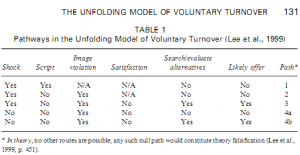10 Tips for Job Interview Success
Job search techniques change, the labour market changes and job descriptions change. But what more or less stays the same is the job interview. It’s your chance to sell yourself. The first 30 seconds of a job interview are the most important – so if you want to be a cut above the rest you need to be on the ball. Rob Yeung, a business psychologist, maintains that an interview is all about the three Ps. “You need to prepare, you need to practise, and then, on the day, you need to perform.”
Here are 10 tips for interview success.
1. First impressions count
Greet your interviewer with a smile and firm handshake. Give eye contact. Try to make small talk during the walk from the reception area to the interview room. Liz Anderson, a human resources manager says, “You have to sell yourself before you can sell anything else and the first 30 seconds are when the interviewer subconsciously makes decisions about whether they like you or not and whether you will fit into the team.”
2. Be prepared
Re-read your CV and the job advert just before the interview. Do your research thoroughly: Look at the company web site or obtain literature. You may be asked about the salary you are after so make sure you research that as well.
3. Don’t waffle
Answer questions properly – even if you need a few moments’ silence to collect your thoughts. Anderson advises, “It’s better to say you need a minute to think about your answer rather than speak instantly and regret it afterwards.”
4. Why should they hire you?
Most job adverts will list qualities they’re looking for – a team worker, a good communicator – so it’s up to you to think of examples of how you can demonstrate these skills. Be ready to talk about your knowledge, experience, abilities and skills. Have at least three strong points about yourself that you can relate to the company and job on offer.
5. Be positive
Your interviewer will be thinking about what it would be like to work with you, so the last thing they’ll want to hear is you talking about your boss or current colleagues behind their back. Interviewers like to see someone who enjoys a challenge and is enthusiastic.
6. Remember your body language
It is not what you say, but how you say it. During the interview, do not fold your arms and lean back or look to the floor! Sit upright and try to maintain good eye contact. Use your hands and lean forward when making a point. Many people cannot think and control their body language at the same time, which is why you need to prepare.
7. Expect the unexpected
Your interviewer may try to catch you off guard: A survey by OfficeAngels has revealed that 90 per cent of employers ask ‘killer’ questions in interviews. It is impossible to plan for every difficult question, such as “How would your colleagues describe you?” but try to appear relaxed and in control. Ask the interviewer to repeat the question if necessary but do not evade it. Hopefully you will not befall the fate of those job candidates at B&Q who were asked to dance to “Blame it on the Boogie”!
8. Develop rapport
Show energy, a sense of humour and smile. Jean Smith, a social anthropologist says: “It’s infectious, being positive and enthusiastic.” Ask your interviewer questions about themselves and any issues the business is facing.
9. Clarify anything you are unsure of
If you are not certain what are meant by a particular question, ask for clarification. At the end, ask the interviewer if there is anything else he or she needs to know about. Do not be afraid to ask when you are likely to hear if you have been successful or not.
10. Remember your manners
It is better to choose than to be chosen. Tell the interviewer why you are interested in the company and job opportunity. Ask them for a business card and follow it up by sending a “thank-you” e-mail or letter, saying how much you enjoyed meeting them and how interested you are. Take the opportunity to detail the key advantages you bring.
SOURCE: Career Builder




